Many engine builders believe that exhaust changes—particularly when coupled with intake modifications—provide the easiest, most efficient and most noticeable Âperformance gains to any otherwise stock engine. Opening the exhaust side produces discernable increases in horsepower and torque, but the glut of state legislative actions in recent years has left some consumers gun-shy about installing non-stock exhaust systems despite their proven ability to increase performance and, in some cases, even provide improved fuel economy. It’s mostly a case of noise abatement, but there are also considerations concerning emissions and warranties.
Noise is the most obvious and frequent area of concern. To this point, the states have enacted legislation that is, to say the least, inconsistent. However, many specialty-equipment exhaust companies perform their own noise testing. Borla Performance Industries, for instance, tests every system it produces using Society of Automotive Engineers (SAE) procedures and the California exhaust-noise specification, which is 95 decibels in controlled conditions. Borla produces not only its own branded line but is also a supplier for the aftermarket programs run by a number of original-equipment (OE) manufacturers.

Said Chris Kaufmann, Borla’s motorsports public relations manager: “Our testing is done at idle and running rpm as well as inside and outside the vehicle and at speed, including drive-by at speed. We have different criteria depending on the application. We need to balance the sound attenuation frequencies with performance and potential resonance for our normal aftermarket system, but each of our OE customers establishes its requirements and has a different desire. GM Performance may be looking for something that is not too aggressive for the Cadillac, while Roush may be looking for a much more race-type system for a Mustang. We do it the way the OEs want us to for their orders and then do it the way our marketing, customers, engineers, distributors and staff want on the aftermarket side. These could be two distinctly different systems.â€
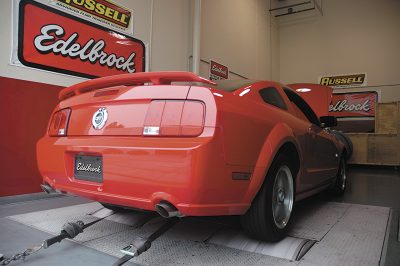
While the SAE specification is the closest thing to a standard in the industry, exhaust proposals continue to arise within state legislatures on an almost monthly basis. Keeping track of those plans and their progress though the state bodies is imperative for the exhaust manufacturers, but it is also important for local exhaust and repair shops to understand what is being proposed and passed in their states. Scott Stutler, product manager for the DynoMax exhaust division of Tenneco Inc., recommended the Specialty Equipment Market Association (SEMA) as an expert and up-to-date source of legislative information at its www.semasan.com Web site (see “Watching the Law†in this issue).
“We monitor that website very closely,†Stutler said. “We also have regional sales managers throughout the Tenneco organization all over the country. We have about 130 guys in the field, and they are a pretty valuable source of information for what’s happening in their specific territories.â€
Beyond noise restrictions, emissions can also play a part in exhaust systems. While cat-back systems are not affected, headers and catalytic converters are subject to various regulations.
“Emissions are certainly a factor in the equation,†said Arty Feles, vice president of research and development for Edelbrock Corporation. “We do not produce and market a replacement exhaust system that would compromise the vehicle’s emissions status. This would typically entail the removing of or changing of the catalytic converters or moving the location of the O2 sensors in order to obtain more performance.â€
In general, our sources said, if a part is emissions legal in California, it will pass muster everywhere. Most of the manufacturers said that they therefore strive to meet California’s requirements for all of their street-legal products. When it comes to parts that are designated as “for off-road use only,†however, shops should be truthful with their customers to avoid problems. Even then, some enthusiasts seem willing to take their chances.
“We have found that when we do build an aggressive system like we do for, say, the Corvette, Ford GT, Mustang or Lamborghini, our customer takes the warning as part of the risk,†Kaufmann said. “It’s like telling someone with 500 horsepower, ‘This car can exceed the speed limit.’ We feel it is our obligation both legally and ethically to advise them if the system is designed for off-highway and race use.â€
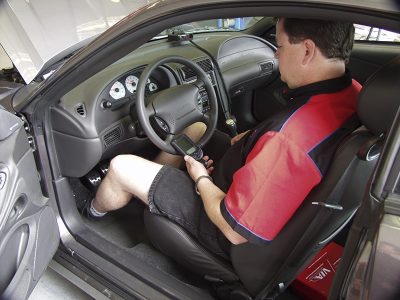
Some states are attempting even more severe restrictions. There is pending legislation in Massachusetts that would forbid modification of an exhaust component if it increases the noise level of the vehicle from its original design. Conversely, there is also some progress toward a more equitable solution. For instance, California recently passed legislation that provides for the specific 95-decibel limit mentioned earlier. The law, which SEMA helped draft, also allows courts to dismiss citations for exhaust systems that have been tested and for which a certificate of compliance has been issued. Under the program, vehicles that have been cited (but only those that have been cited) can be tested at one of 40 Smog Check stations statewide that provide referee functions. These referee stations are issuing certificates of compliance for vehicles when tests of their exhaust systems demonstrate that they emit no more than 95 decibels under SAE test procedure J1169. Since the program’s inception approximately 90 percent of those vehicles tested have passed.
“This information validates our long-held contention that a vast majority of citations written for violation of California’s exhaust noise laws are, in fact, erroneous,†said SEMA vice president of government affairs Steve McDonald.  “For years, the enforcement policy used by police officers has deemed nearly all exhaust system modifications illegal, even where the noise levels met state standards.â€
Subjective enforcement remains a problem elsewhere, but other states have adopted similar standards. “The good news is we now have a number—the current street-legal number in California is 95 dB—and that gives us a great deal,†said Kaufmann. “Before, it was totally subjective.â€
Kaufmann cautioned that installers and dealers should make their customers aware of the cumulative effects of engine modifications. Replacing a factory system may not violate noise codes in and of itself, but further alterations may also increase sound.
“For example, a customer buys an exhaust system and it’s at 93 dB installed,†Kaufmann said. “Then this customer adds a supercharger. In most cases, the sound will increase several dB, making the sonic report higher. Thus, what was legal before may not pass now.â€
Of course, noise doesn’t automatically become an issue when a stock exhaust system is replaced by a performance system. “You can add performance without adding too much noise,†confirmed Kevin McClelland, research manager for Flowmaster. “Using the correct group of components will give you added performance through reducing backpressure and increasing velocity. The benefits can be reduced engine heat, increased horsepower and torque and a measurable fuel-economy increase.â€
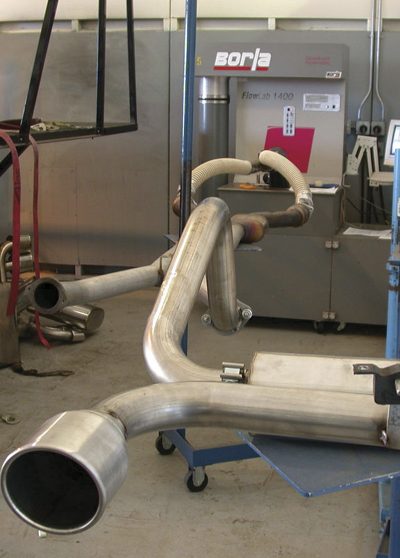
Stutler agreed, noting that the sound levels as well as the performance gains depend on how restrictive the factory exhaust was to begin with. “The decrease in backpressure is the result of freer-flowing components,†he said. “The factory components that they’re replacing are restrictive because they’re designed to limit exhaust noise to the highest ability. Some noise level increase is a byproduct of replacing them with components that are less restrictive.â€
Some customers are also wary of making exhaust or other performance changes for fear that their new-car warranties might be affected. Shops should ensure that their customers are aware of the Magnuson Moss Warranty Act of 1975.
“Basically, it says that the factory warranty cannot be voided by the installation of any aftermarket part, whether it’s a performance part or not,†explained Stutler. “It is the duty of the [new-car] dealer to prove that a replacement part caused the failure of another part when the warranty is in question. If a consumer installs an exhaust system and the engine sucks a valve two months later, that clearly wasn’t the exhaust system’s fault. The Magnuson Moss Act is there to protect consumers from exactly that situation. Obviously, if a consumer or a shop replaces the exhaust system, that system will no longer be covered [by the new-car warranty], but the rest of the vehicle warranty will still be valid and intact.â€
The misconceptions about performance exhaust systems are easily dispelled, and the benefits extend beyond performance alone. An automotive enthusiast may install a system not only for the gains it provides but also for the beauty it adds to a vehicle. And while too much noise may create problems, a throaty exhaust note adds its own aesthetic appeal. Finally, quality is a further enticement.
“A reputable aftermarket performance exhaust manufacturer always builds a ‘better than’ exhaust,†explained Feles. “What I mean by this is upgraded materials. If the factory used aluminized steel, then we would upgrade to stainless.â€
Feles also pointed out that stock mufflers usually rely on packed material for sound attenuation, and that packing will ultimately deteriorate. On the other hand, many aftermarket mufflers use chambers to modulate sound, and those designs neither break down nor change over time.
Shops and the customers themselves are ultimately responsible for knowing state laws and the local ordinances regarding exhaust noise, but there are a variety of resources available to help in the education process. Local law enforcement should be able to confirm the noise statute being enforced, and the manufacturer of a system will be able to verify whether a particular system meets or exceeds the local dB rating, if there is one. If there are warranty concerns, check with the local new-car dealer to ensure that it is aware of the Magnuson Moss Warranty Act, and explain the terms of the aftermarket exhaust manufacturer’s warranty to the customer. For information about state laws throughout the country, visit www.sema.org (SEMA’s main Web site) or the www.semasan.com site for consumer information.
“Most quality brand exhaust systems are going to be noise compliant in most cases,†said Jason Bruce, marketing director for Hooker Headers. “The main thing to sell to customers is the added value of better looks, sound and performance of the performance exhaust system.â€
SOURCES:
- Borla Performance Industries
5901 Edison Drive, Oxnard, California 93033; 877/462-6752; www.borla.com - DynoMax Performance Exhaust
One International Dr., Monroe, MI 48161; 800/843-4169; www.dynomax.com - Edelbrock Corp.
2700 California St., Torrance, CA 90503; 310/781-2222; www.edelbrock.com - Flowmaster Inc.
100 Stony Point Rd., Suite 125, Santa Rosa, CA 95401; 707/544-4761; www.flowmastermufflers.com - Hooker Headers
1801 Russellville Rd., Bowling Green, KY 42101; 270/782-2900; www.ilovemyhookerheaders.com
By Steve Campbell

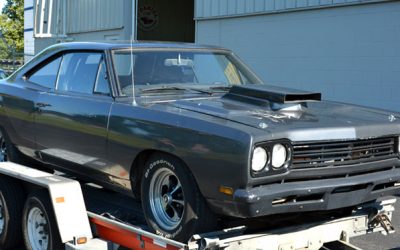
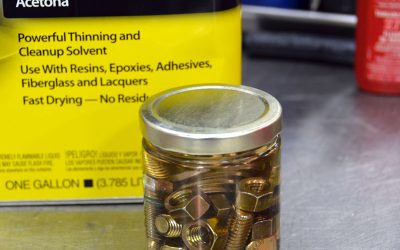
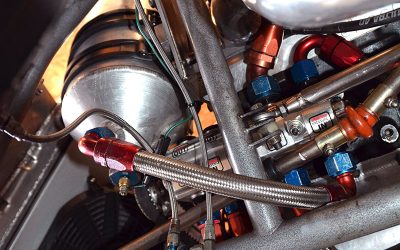
0 Comments